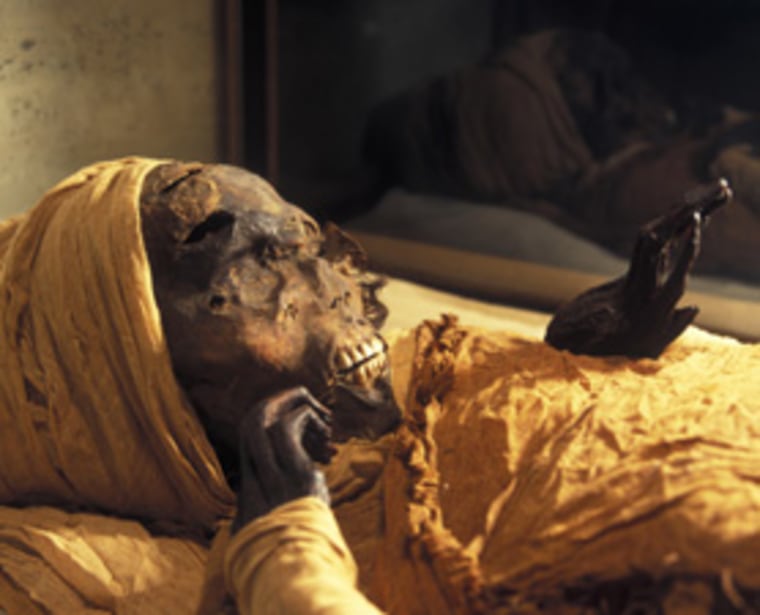Worn teeth, periodontal diseases, abscesses and cavities tormented the ancient Egyptians, according to the first systematic review of all studies performed on Egyptian mummies in the past 30 years.
After examining research of more than 3,000 mummies, anatomists and paleopathologists at the University of Zurich concluded that 18 percent of all mummies in case reports showed a nightmare array of dental diseases.
"Evidence of dental disorders is plentiful because usually teeth are among the best preserved parts of a body. As for other diseases, the published studies do not always provide in-depth details. Nevertheless, we came across some interesting findings," senior author and medical doctor Frank Ruhli, head of the Swiss Mummy Project at the University of Zurich, told Discovery News.
Published in the Journal of Comparative Human Biology (HOMO), the review takes into consideration all studies published since 1977, when computed tomography was first applied to ancient Egyptian mummies.
CT imaging revealed an impressive collection of diseases, including bone disorders, infections and traumas being the most common disorders.
Out of 85 single-listed mummies, Ruhli and colleagues counted 15 cases of degenerative disorders, with a dominating number of osteoarthritis cases and four cases which specifically diagnosed atherosclerosis (a hardening of the arteries).
Infectious diseases among the mummies were also very common. In three cases the subjects most likely suffered from chronic infectious middle ear disease; other infectious diseases included tuberculosis and gangrenous stomatitis, an often fatal gangrene of the cheek and gums which affects mostly children.
Seven mummies showed evidence of Plasmodium falciparum, the most malignant form of malaria. Ten cases showed symptoms of tumorous lesions, with four of them possibly malignant.
Eleven cases showed evidence of pulmonary diseases, which included pneumonia, emphysema and lung oedema.
"Interestingly, most pulmonary affections were related to the presence of anthracotic pigment [carbon] in the lungs. This suggests air pollution by smoke from fires or oil lamps," Ruhli said.
Bone disorders and trauma abounded. The most prominent cases of fractures in pharaohs included the left middle finger in Ramses II, the third ruler of Egypt's 19th Dynasty, better known as Ramesses the Great, and the skull lesions of Seqenenre Taa II, the 14th pharaoh of the Theban dynasty who probably died in a battle.
Most mummies dated to 3,500 to 2,000 years ago, a period when the embalming process was highly developed. However, despite the large number of reported diseases, much mystery remains about the mummies.
"Sex wasn't determined or reported for about a third of the examined mummies, moreover very few studies mention the cause of death," Ruhli said.
Indeed, for the vast majority of studies, the cause of death -- which came between ages 20 and 40 for half of the mummies -- was either not considered or remained vague.
"The embalming treatment and the nature of certain diseases make it difficult to diagnose mummies. For example, diarrhea, which is still a very common cause of death among children in third world countries, would not really leave visible signs in mummies," Ruhli said.
Only in four cases the cause of death was reported with high certainty, with the culprit being pneumonia, pulmonary oedema, neurofibromatosis and chronic otitis.
In the remaining cases, the possible cause of death seemed to be due to a trauma, infectious diseases, unspecified inflammatory process, malnutrition and in one case, homicide.
"The lack of information about the cause of death in Egyptian mummies can be explained by the embalming process itself, which removed the internal organs. Many diseases involving those organs could not be easily diagnosed," said Gino Fornaciari, professor of forensic anthropology and director of the Pathology Museum at the University of Pisa.
